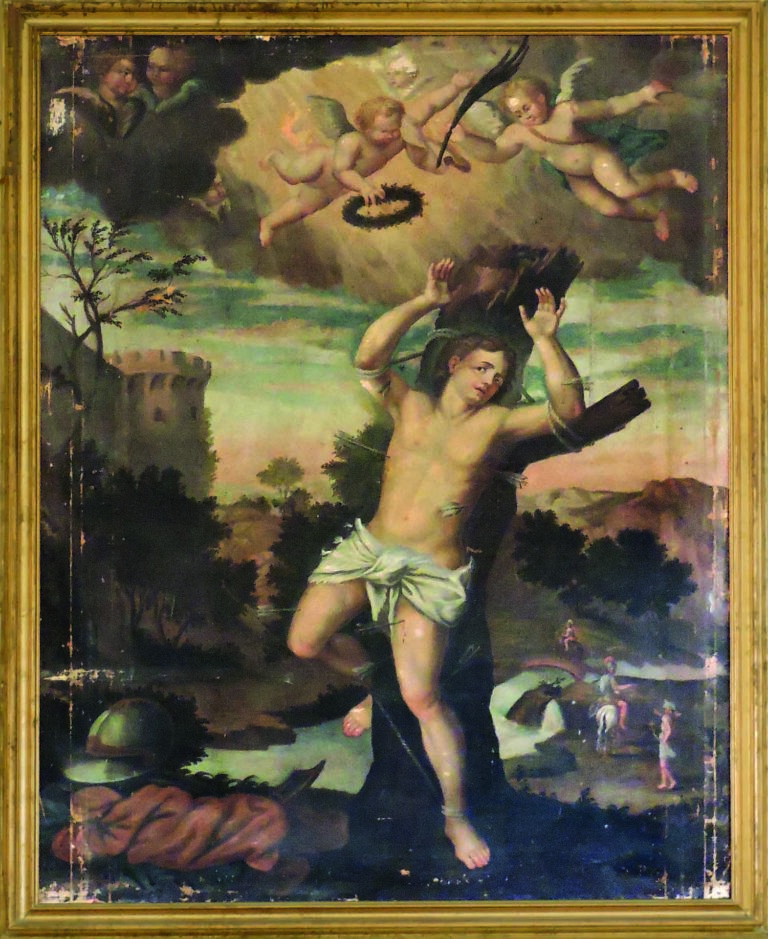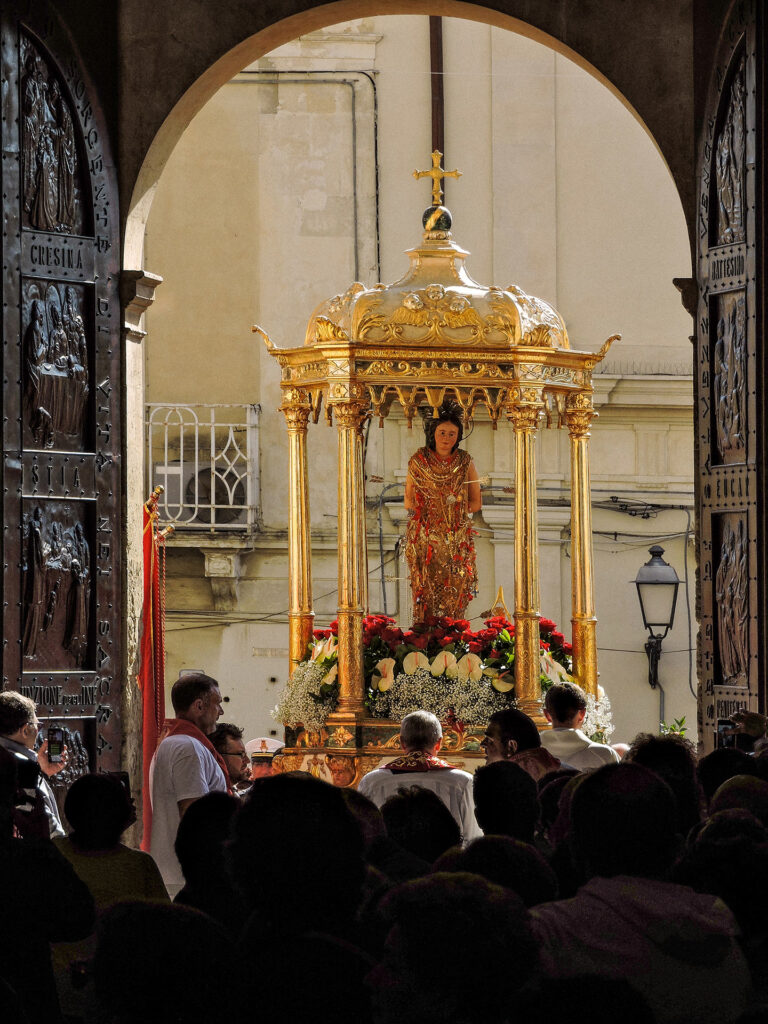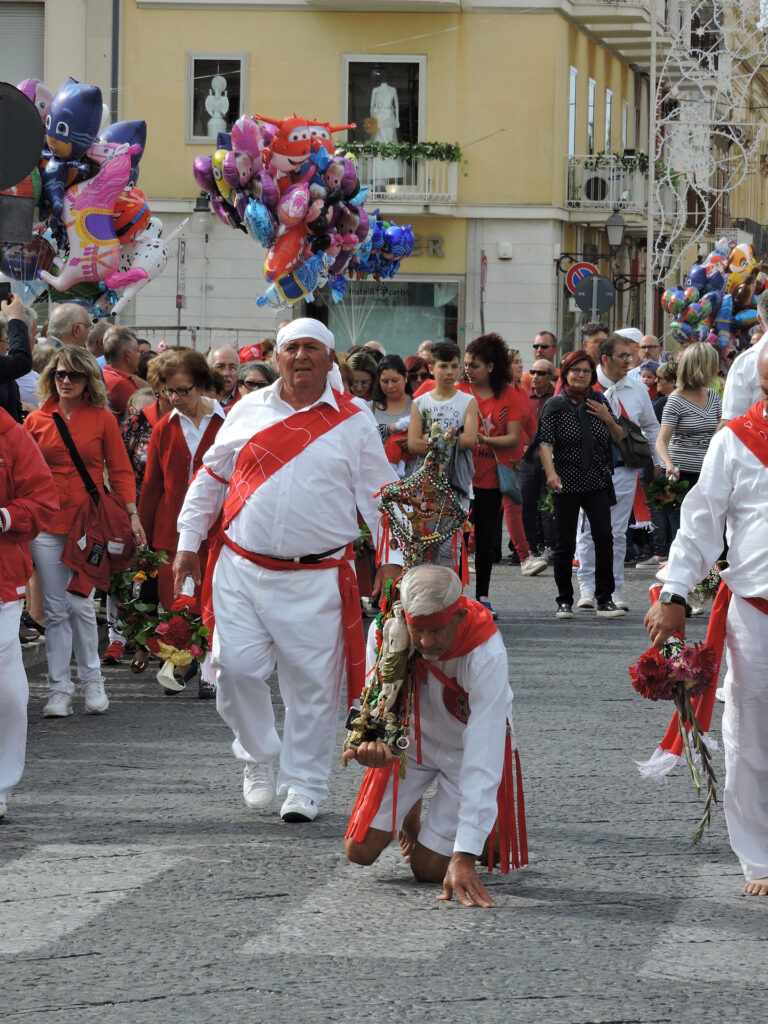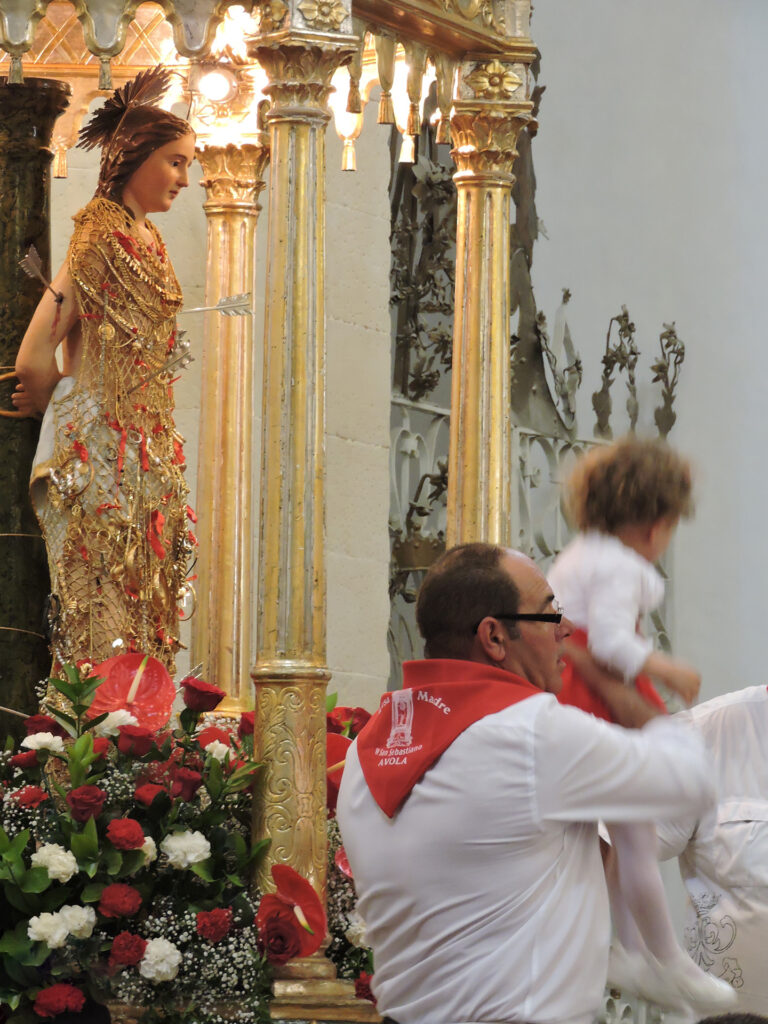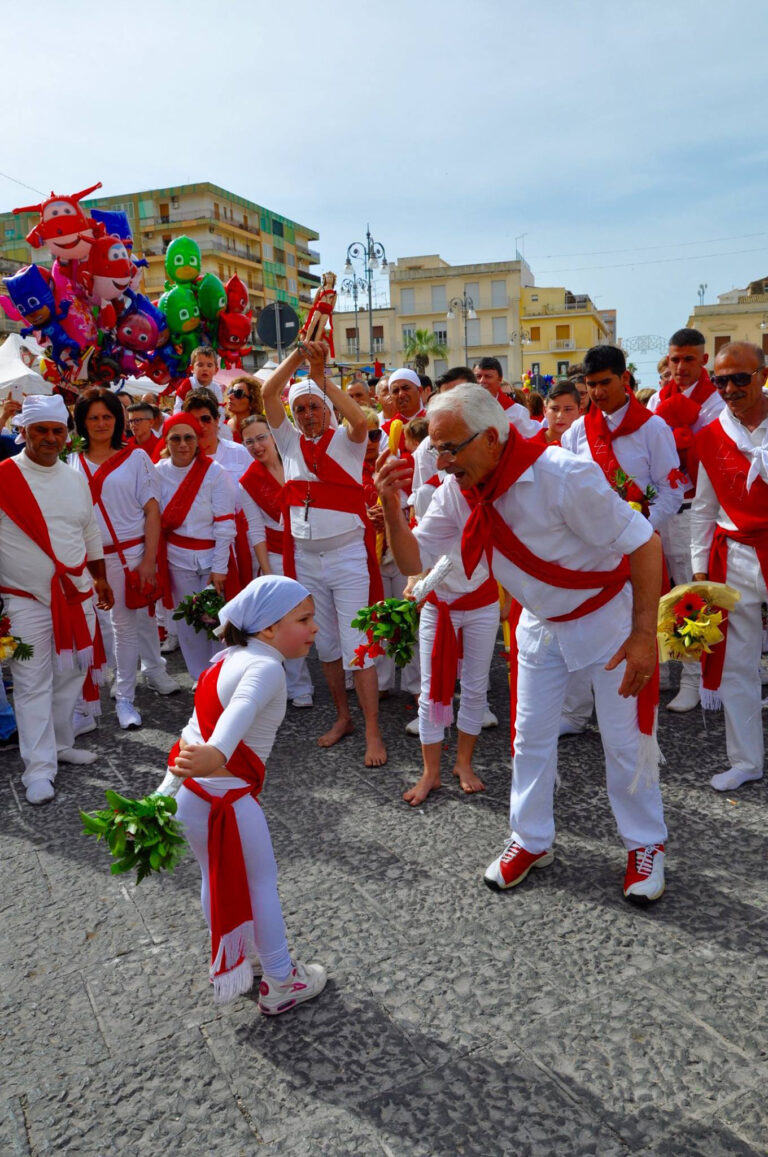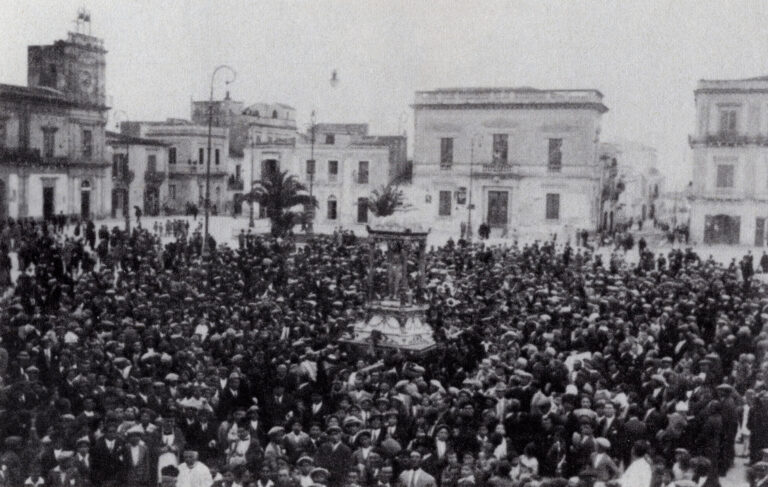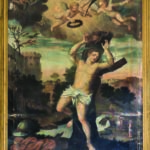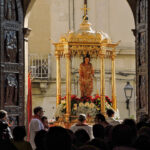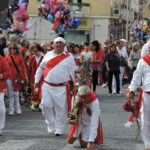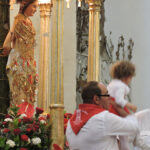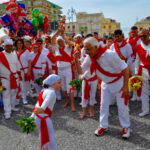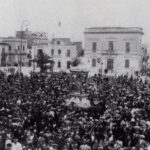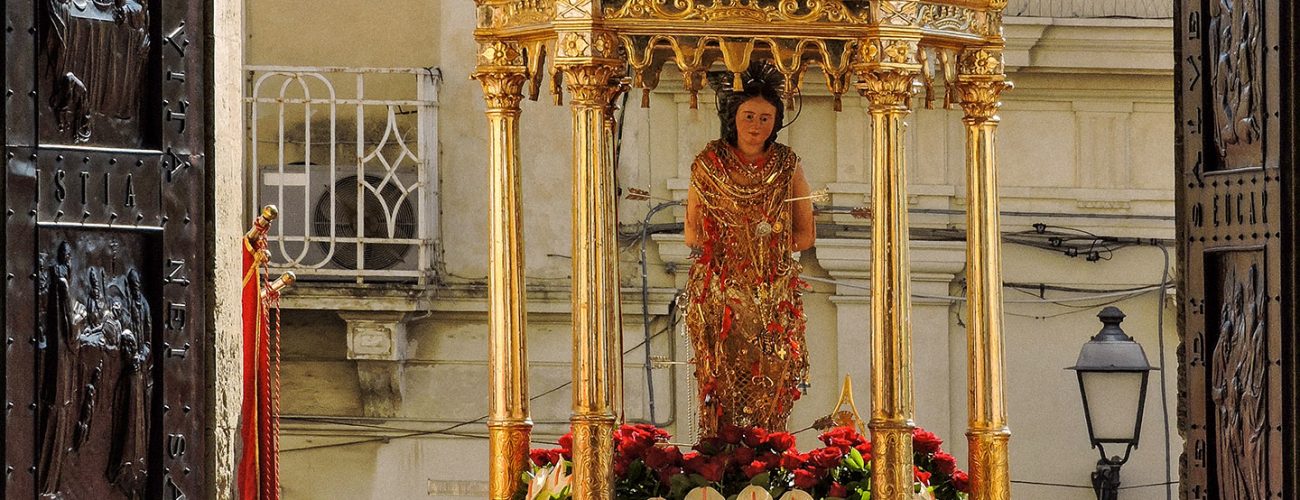
St. Sebastian, a devotion that is renewed
In many cities of south-eastern Sicily, in particular Catania, Augusta, Siracusa, Ferla, Palazzolo Acreide, Melilli and Avola, the cult of San Sebastiano is very deep-rooted and even today there are many devotees to this saint, considered a protector against the plague and epidemics.
As regards the territory of Avola, where San Sebastiano is particularly venerated and “feared”, a church dedicated to the bimartyr stood in the old city as early as 1449; following the seismic event of 1693, a new church was built on the new site, near the main square. At the end of the nineteenth century, the building underwent important modifications and lost its original function, for this reason the relic, the furnishings and some paintings (including the one depicting the martyrdom of the Saint) were transferred to the Mother Church dedicated to Saint Nicolò, today the Parish of San Sebastiano.
Although the Roman calendar of saints and martyrs places the death of Saint Sebastian on January 20, 288 AD, the celebrations in Avola take place in May. For the whole month, devotees take part in a pilgrimage, now rarely carried out barefoot or on knees, which starts from the niche of S. Sebastiano (u mysteries i San Mastianu), located on the S.S. 115, near the Chiusa di Carlo district, up to the Mother Church, where the statue of the Saint is exhibited. Generally, devotees offer a floral gift (u mazzettu), candles, ex-votos or even banknotes and gold, which are tied to a net placed on the bust of the statue. Some devotees, until a few decades ago, went around the streets of the city knocking on the doors of private homes or went to commercial businesses to collect offerings for mass: this custom is known as arricogghiri a missa a Sammastianu.
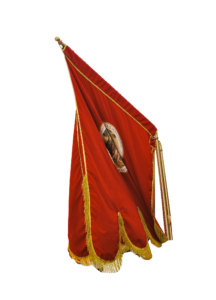
The solemn celebrations are on the second Sunday of May, when at dawn a large number of devotees, the nuri, dressed in the typical clothes of the festival, the red robe for women, and white trousers and shirt with a band at the waist and on the chest for men, they travel the aforementioned path together. Waiting for them, at the intersection between Via Siracusa and Corso Vittorio Emanuele, is the statue, which for the occasion is placed inside a simulacrum, that is, a vehicle with wheels surmounted by a golden canopy.
Unlike the pilgrimage outside the day of the feast, which takes place in a collected and silent manner, the morning procession on the second Sunday of May is characterized by multi-voiced or choral invocations by the devotees. Both on the afternoon of the eve of the feast and on the whole day of Sunday, candles and red ribbons are sold in the churchyard of the Mother Church, purchased by devotees to be brought to church: the candles are placed near the statue or near the chapel dedicated to the Saint, instead the ribbons are blessed and brought home. Devotees often leave offerings and receive ribbons, sacred images and small medals with the image of martyrdom. Another custom linked to the festival is the blessing of children which takes place on Sunday morning, some devotees placed on the simulacrum raise infants and children to the Saint.
The pilgrimage route (a cursa re nuri), as well as the clothing of the devotees themselves, underwent some changes and evolutions during the twentieth century, in fact at the beginning of the century the nuri gathered late at night (around 2am) near of the Marina (the current Borgo Marinaro), and they paraded running completely naked. Further changes were imposed, shortly before the mid-twentieth century, by the priest Antonio Frasca, who prohibited entry into the church to devotees who did not wear clothing appropriate to the sacredness of the place, also because more and more women and children took part in the procession that took place was now taking place at dawn.
The festival also included a procession in the early afternoon, in fact the statue, accompanied by the musical band, went through the city streets and for the occasion the Avolese community offered the Saint other gifts: live animals, flower petals and cuddureddi, which are donuts of unleavened bread with red ribbons.
Nowadays, the procession takes place in the late hours of the afternoon: the celebration ends with the arrival of the simulacrum in Piazza Umberto I and with a fireworks show.
